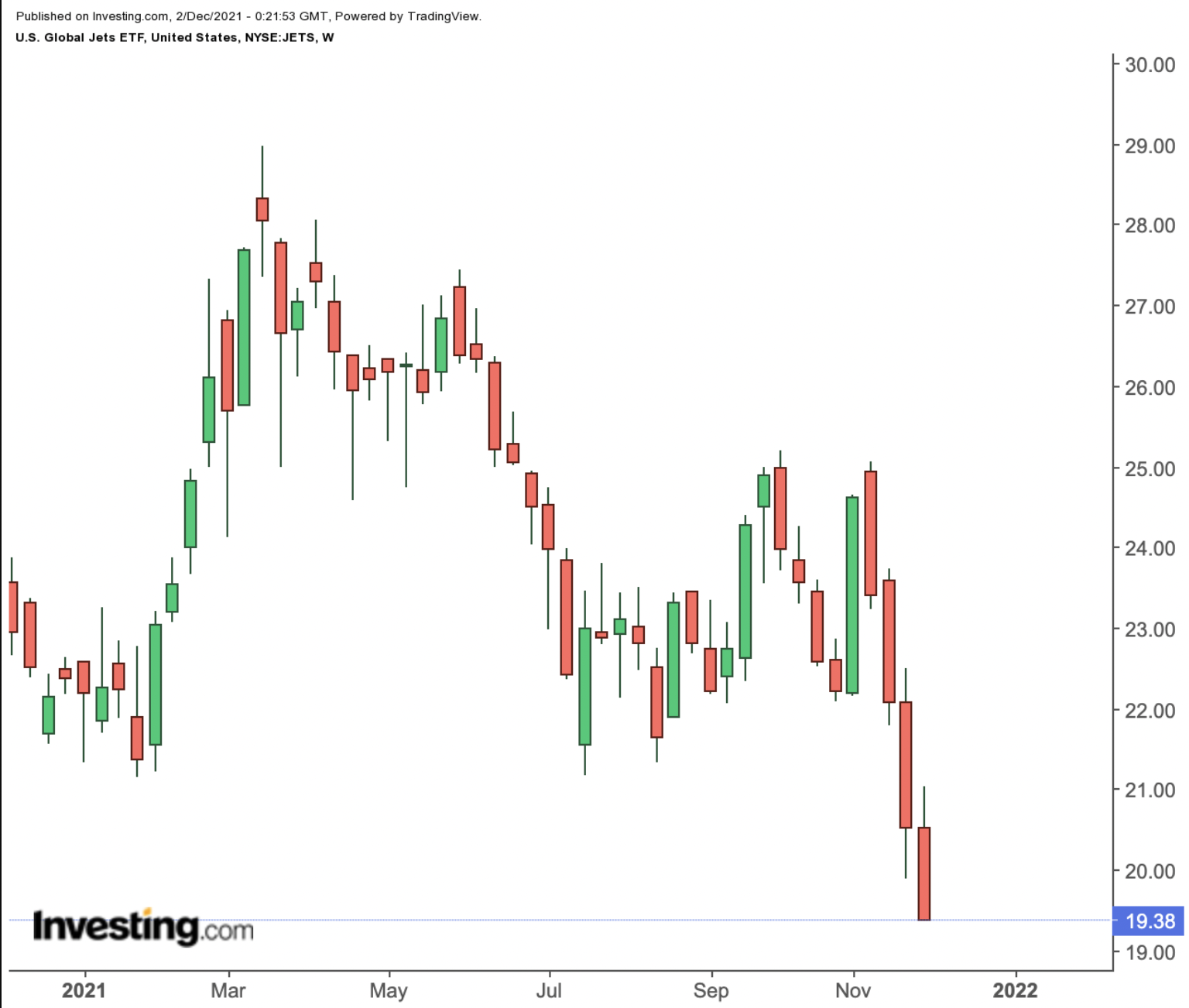Praxis Precision Medicines general counsel sells $4.8m in shares
The final week of November brought increased volatility to broader markets. But when looking at the year as a whole, so far the Dow Jones, the S&P 500 and the NASDAQ 100 are up 12.9%, 22.0% and 25.8%, respectively.
However, not every industry has seen positive returns in 2021. For example, we recently outlined sectors and a range of exchange-traded funds (ETFs) that fell in November and failed to post positive returns this year. But the year isn't yet over, so today, we introduce two funds that could potentially fare better in the weeks ahead.
1. SPDR S&P Pharmaceuticals ETF
- Current Price: $45.38
- 52-Week Range: $45.26 - $56.32
- Dividend Yield: 0.65%
- Expense Ratio: 0.35% per year
The US represents the largest market for pharmaceutical products globally. Recent metrics suggest that in 2020 the country spent about $514 billion on pharma sales, close to half the revenue worldwide.
The COVID-19 pandemic has put the biopharma industry in the limelight. Companies have rushed to develop vaccines as well as medicines to fight the disease.
As a result, in the past 52 weeks, the Dow Jones Pharmaceuticals Index returned more than 15%. However, in November it was down over 2%, and most of the declines came last week.
Investors are especially debating whether vaccines by Pfizer (NYSE:PFE) and BioNTech (NASDAQ:BNTX) as well as Moderna (NASDAQ:MRNA), Johnson & Johnson (NYSE:JNJ) and AstraZeneca (NASDAQ:AZN) will be effective against the Omicron variant of COVID-19.
The SPDR® S&P Pharmaceuticals ETF (NYSE:XPH) invests in pharmaceutical names in the US. The fund started trading in June 2006.

XPH, which has 47 holdings, tracks the S&P Pharmaceuticals Select Industry Index. The top 10 names make up about 55% of net assets of $215.4 million. Analysts note that these names with large moats have competitive advantages over their smaller competitors.
Leading holdings include drug manufacturing giants Pfizer, Eli Lilly (NYSE:LLY), Merck (NYSE:MRK) and Johnson & Johnson; Royalty Pharma (NASDAQ:RPRX), the largest purchaser of biopharmaceutical royalties; and animal health group Zoetis (NYSE:ZTS).
Year-to-date, XPH is down 11.9%. Price/Earnings (P/E) and Price/Book (P/B) ratios are 8.43x and 3.00x, respectively. Interested readers could consider buying around these levels.
2. US Global Jets ETF
- Current Price: $19.38
- 52-Week Range: $19.78 - $28.98
- Expense Ratio: 0.60% per year
In the early days of the pandemic in 2020, travel related shares saw significant declines. Since then, we have seen a robust recovery, especially in air travel.
However, global airlines are now bracing for a fresh round of uncertainty over the Omicron variant. For instance, in the past week, the Dow Jones US Airlines Index was down about 5%. It also lost more than 2% in 2021.
Executives especially wonder “how the Omicron variant may affect business travel.” In 2020, the global aviation market was valued around $170 billion. Between 2021 and 2026, analysts forecast a compound annual growth rate (CAGR) of more than 4%.
Our next fund, the US Global Jets (NYSE:JETS) invests in the global airline industry, including airline operators as well as manufacturers. The fund was first listed in April 2015.

JETS, which has 50 stocks, tracks US Global Jets Index. The leading 10 holdings comprise close to 60% of net assets of $3.23 billion. In fact, the top names make up more than 40% of the ETF, and include Southwest Airlines (NYSE:LUV), American Airlines (NASDAQ:AAL), United Airlines Holdings (NASDAQ:UAL) and Delta Air Lines (NYSE:DAL).
Also part of the fund are JetBlue Airways (NASDAQ:JBLU), Allegiant Travel (NASDAQ:ALGT), Air Canada (TSX:AC), SkyWest (NASDAQ:SKYW), Alaska Air (NYSE:ALK) and Hawaiian Holdings (NASDAQ:HA).
The fund is down 9.3% in 2021 and 7.9% in the last 12 months. P/E and P/B ratios are 13.48x and 3.62x. Long-term investors could consider investing around these levels, and especially when the price dips below $20.
